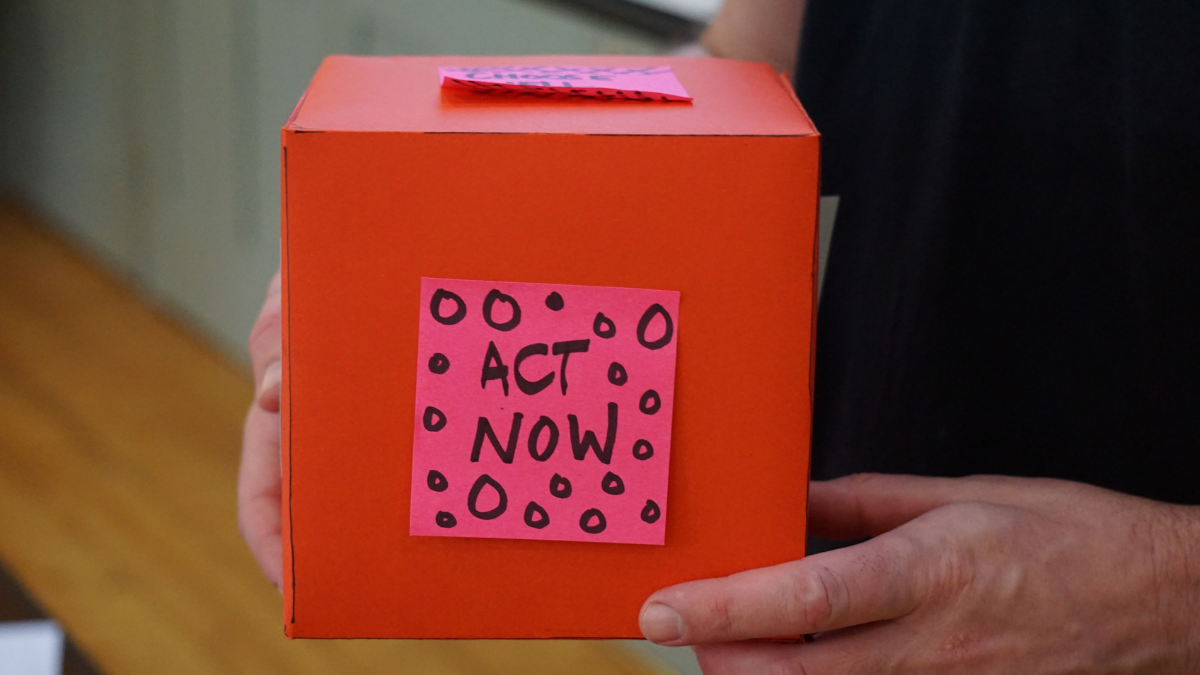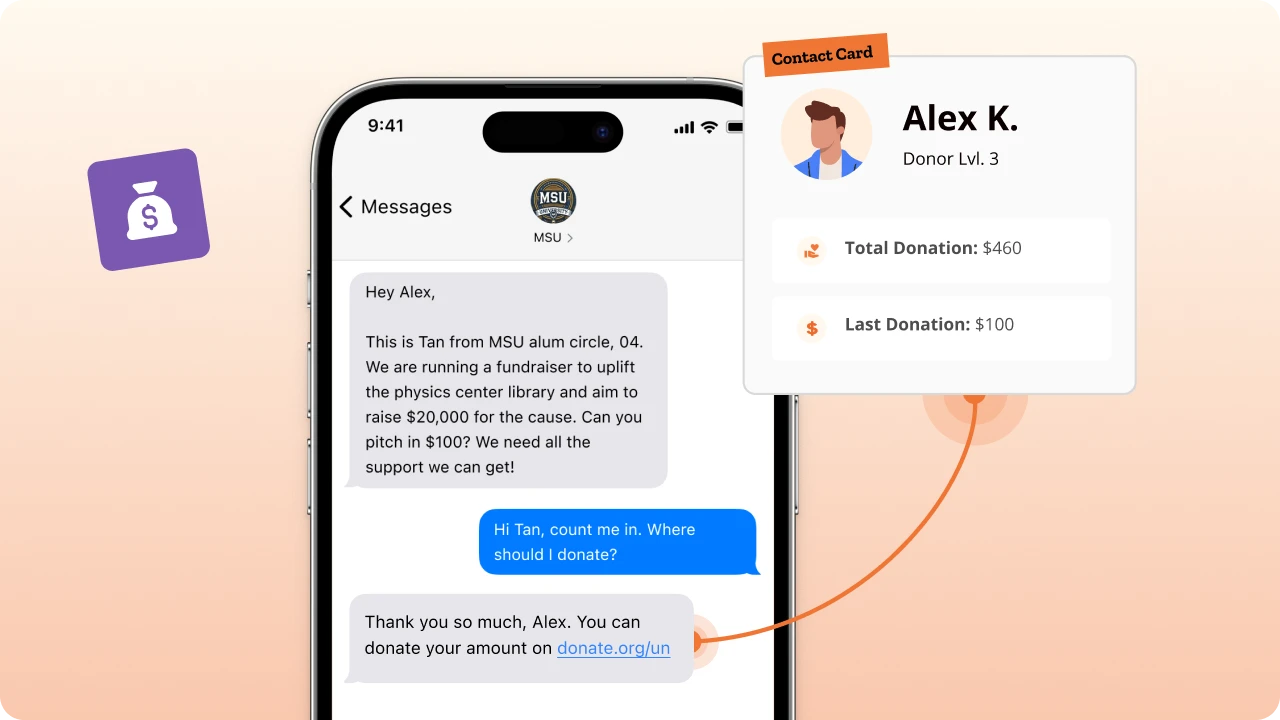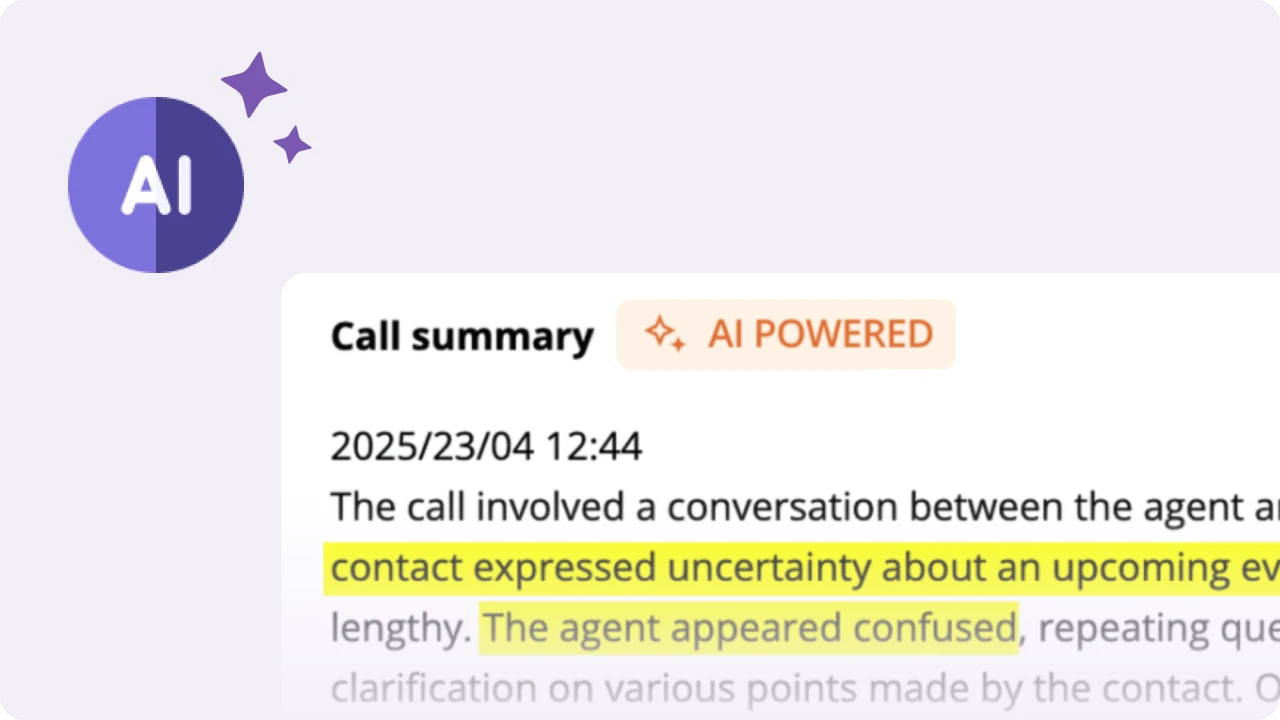Table of Contents
How to ask for donations? Using digital tools and communication platforms and targeting donors’ smartphones is all the rage in 2025. But the results are varied. For example, in 2023, 33% of online donations were made via mobile devices; the average donation was $83.
So, is calling someone for donations good?
Not exactly. As far as studies can reveal, only 2% explicitly donated over a phone call.
So phone calls for donations are bad?
Not exactly either. Research by Penelope Burk found that first-time donors who received a thank-you call from board members within 24 hours of donating increased their second gift size by 39%. Additionally, a study by Bloomerang revealed that donors who received more than one phone call within 90 days of their first donation had a retention rate of 58%, compared to 33% for those who did not receive a call.
The point is that a single phone call will rarely ever translate into a donation. But if you don’t make that phone call, and several others in fact, then you are giving up close to 40% increases in the size of the donations you get.
In this article, we will explore how to ensure the phone calls you make have an impact and are well-planned, as well as what you must keep in mind to expand a nonprofit’s relationship with donors.
| Key Takeaways |
| Adhere to best practices for telephone fundraising, such as SHAKEN/STIR registration, avoiding flagged numbers, using recognizable caller IDs, and segmenting mobile and landline numbers. Demonstrate empathy, ask for time respectfully, and be knowledgeable when asking for donations over the phone. Listen actively to build genuine connections with potential donors before sending donation links. |
How to ask for donations over the phone?

The key to successful solicitation for a fundraising event lies in five crucial elements:
- Empathy
- Asking for time
- Knowledge
- Listening
- Using a fundraising script when appropriate
1. Be empathetic and understanding
“We practice empathy when we stop to ask ourselves: what do I really know about what this donor cares about — not related to our work, but related to theirs? What [are] they worried about? What keeps them up at night? Who [are] they as a person?”
– Amy Varga, fundraising expert and consultant.
Nonprofits often tend to veer towards ‘product marketing’ when making their pitch. There is a strong focus on the work done, the expertise of the people doing the job, and an appeal to impersonal charity.
A typical pitch may sound like this – “We have been digging wells in this region for 30 years, and have gotten 19,000 wells dug so far. Your donation can ensure water supply to the region.”
However, the 2021 Nonprofit Communications Trends Report highlighted that the top three factors influencing charitable giving are personal connection (62%), trust in the organization (58%), and perceived impact of the donation (52%).
A nonprofit can only build such connections and trust if its phone calls are made after thorough research. Nonprofits typically have a database of donors with their basic information and donation history in place. But you must know them as a person, not merely a donor, to empathize with what will move them to support you.
Empathy requires callers to know why the donor donated the last time, what causes are important to the donor, and must be able to show the donor the specific impact their donation has.
Even if they don’t donate on the spot, they will remember the empathy they heard during the call.
2. Ask for their time
Respecting a donor’s schedule is crucial for a productive conversation. So critical that, for example, the Veritus Group trademarked the concept as “Permission-Based Asking™”.
The group highlights that “implementing Permission-Based Asking™ can transform donor relationships by building collaborative dialogue and aligning fundraising efforts with the donor’s comfort and readiness.”
Moreover, the Association for Healthcare Philanthropy underscores that seeking permission from donors helps develop rapport, build trust, and show respect, which are crucial elements in effective fundraising.
Politely inquire if it is a suitable time to talk and be prepared to schedule a call for a more convenient time.
This enhances your chances of securing their support and leaving a lasting impression.
3. Know what you’re talking about
Supporters will ask you questions when you make fundraising appeals. These can vary from your organization’s mission to specific donation requests and donors invested in your cause to your donation process.
Answering those questions is crucial to building trust with donors. Nonprofits must train volunteers and staff before making calls to ensure they come across as knowledgeable about the nonprofit.
A study published in the Journal of Public and Nonprofit Affairs found that investing in volunteer training is paramount for enhancing positive interactions within nonprofit organizations.
So make sure your volunteers are well-trained and upbeat when handling questions. And have a system to escalate questions to the next level.
Read Next: The Essential Qualities of an Online Donation Form
4. Be a good listener
Listening attentively to donors’ concerns and interests is essential for tailoring your pitch and addressing their needs. This is especially true for supporters targeted for significant gifts (or major donors). Active listening techniques, such as:
- Remaining present
- Focusing on the prospective donors
- Restating key points
- Asking open-ended questions
Actively listening to the donor boosts communication and collaboration, and tells the agents where the supporter is hooked and what will help them raise money. Soliciting donations is not just about asking for money but about securing genuine, long-term relationships during your fundraising efforts.
5. Have a script… But know when not to use it
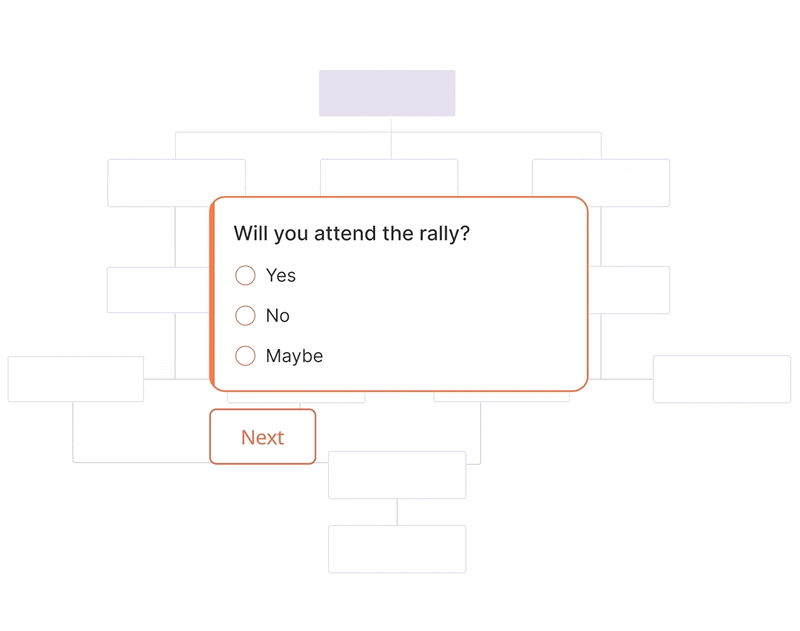
One of the fundamentals of asking for donations is having a script that volunteers can refer to for each phone call. But remember – fundraising efforts are about building relationships with potential donors, not parroting off a generic script.
The key is to balance using a script to guide the conversation and being flexible enough to adapt to the donor’s interests and concerns.
Having a flexible script is also key to providing accurate and up-to-date information. A study published in the Stanford Social Innovation Review found that giving donors precise data led to an 80% increase in people selecting the charity they felt was most ‘effective’.
This suggests that confidently and accurately conveying an organization’s work can significantly influence donor behavior.
Discover next: Branching Scripts for donation appeals over calls are not linear, and dynamic scripts are crucial for telephone fundraising.
How to ask for donations: The technology nonprofits must have
Success in telephone fundraising depends on mastering the art of asking for donations and adhering to best practices at the backend. Implementing these practices will help ensure an effective and productive fundraising campaign:
- SHAKEN/STIR registration
- Avoiding flagged numbers
- Using recognizable caller IDs
- Segmenting mobile and landline numbers
- Sending donation links only after confirming support on the call
Your numbers should be SHAKEN/STIR registered
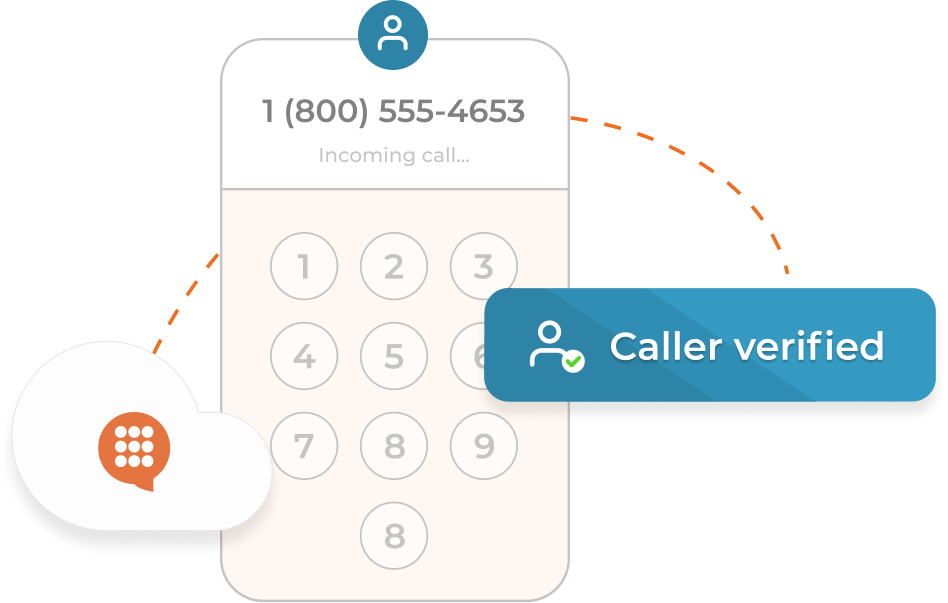
SHAKEN/STIR registration is a protocol introduced by the Federal Communications Commission (FCC) to reduce the number of spam and spoofed calls consumers receive. Registering your number for SHAKEN/STIR will give your numbers a “verified” badge, increasing the chance of your donors answering your calls.
To obtain SHAKEN/STIR registration, your organization must undergo a verification process that includes signing calls with varying attestation levels based on the caller’s knowledge and using digital certificates to guarantee the security of the calling number.
CallHub customers can get in touch with us, and we will help you register your numbers. Remember, identifying yourself is crucial for better answer rates- and without the call going through to potential donors, your fundraising appeal is hitting walls.
Make sure your numbers are not flagged
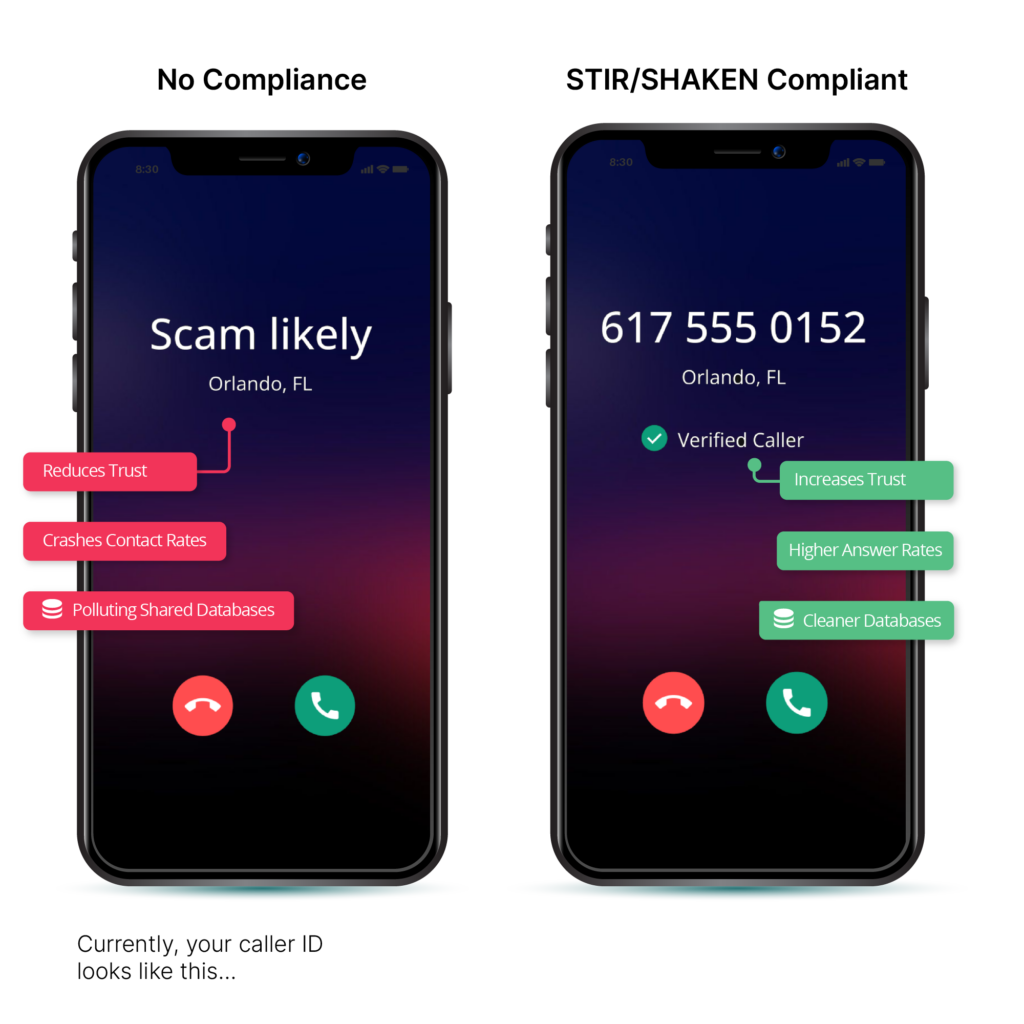
A flagged phone number can damage your organization’s reputation, leading to diminished call response rates and increased costs. Carriers flag numbers or mark them as potential/spam when consumers mark them as such on their calls.
People are (understandably) less likely to answer a phone call from a “potential spam” number. But we understand that you are not spamming.
So, we created “Spam Label Shield,” a feature that will replace your flagged numbers with fresh ones so your calls don’t go out with a red flag and harm your donor engagement or hinder efforts to collect donations.
Use a caller ID that prospective donors recognize
Next comes a fundraising strategy focused on warm outreach.
A recognizable caller ID can significantly increase call response rates, as donors are likelier to answer calls from organizations they recognize.
SHAKEN/STIR is the way to get your foot in the door for cold-calling pledge campaigns. Warm outreach includes using phone numbers that your contacts know (either mentioned on your website and/or social media, or by using the same number/s to call them every time).
Another way charitable organizations can boost answer rates while cold calling is to use local phone numbers. CallHub offers the Dynamic Caller ID feature that recognizes a contact’s state and rents numbers local to that state.
Local numbers have a higher chance of getting answered. Encourage donors to support you by establishing a personal connection from the first impression!
Segment cellphone and mobile numbers for effective nonprofit fundraising
Segmenting mobile and landline numbers is an essential practice for targeted outreach and compliance with opt-in requirements. While TCPA regulations exclude calls made by tax-exempt nonprofits in automated phone call regulations, segmenting landline and mobile numbers is still a good practice to:
- Start with a clean list
- Check if you can send a follow-up link for online donation
- Stay safe with the TCPA regulations about opt-ins.
Adherence to opt-in requirements and respect for potential donors’ preferences are essential for preserving trust and optimizing the success of your telephone fundraising campaign. By segmenting mobile and landline numbers, you can effectively reach your target audience and secure the support your organization needs.
Send donation links only after you confirm support on the call
Maintaining legitimacy and trust in the donation process requires sending donation links only after confirming support on the call. You reduce the risk of scams and fraudulent activities by waiting to provide donation links until you have verified the donor’s interest.
This practice ensures the security of the donation process and fosters trust and confidence in your donation appeals. Donors will appreciate the care you take to ensure their donations are secure, making them more likely to support your cause and engage with your organization.
As you implement these strategies and techniques, remember that the ultimate goal is to create genuine connections with your donors and address their needs. By doing so, you will increase your fundraising success and foster a community of supporters who are invested in your organization’s mission and success.
How to ask for donations: FAQs
What is good wording for asking for donations?
“I’m asking for your support to help me reach my goal. Your donation of [amount] will help me [accomplish a task/reach a goal/etc] and will go toward [describe exactly what the contribution will be used for]. Please consider donating today.”
How can I ensure my organization’s phone numbers are not flagged?
To ensure your organization’s phone numbers are not flagged, monitor your dialing strategies to comply with carrier best practices and maintain a positive reputation.
Enable the Spam Label Shield on your CallHub account to replace flagged numbers with fresh ones automatically.
How to ask for donations during peer-to-peer fundraising?
Peer-to-peer fundraising will boost donations because individuals donate to people who have established a strong personal connection.
A prospective donor need not be part of family members or friends- your agents can nurture relationships from scratch, but at scale. Here, we have a guide for peer-to-peer texting for fundraising, which also lets you indulge in multi-channel fundraising!
Read more: Fundraising strategies and tips using peer-to-peer texting.
Feature image source: Jo Szczepanska/Unsplash.
